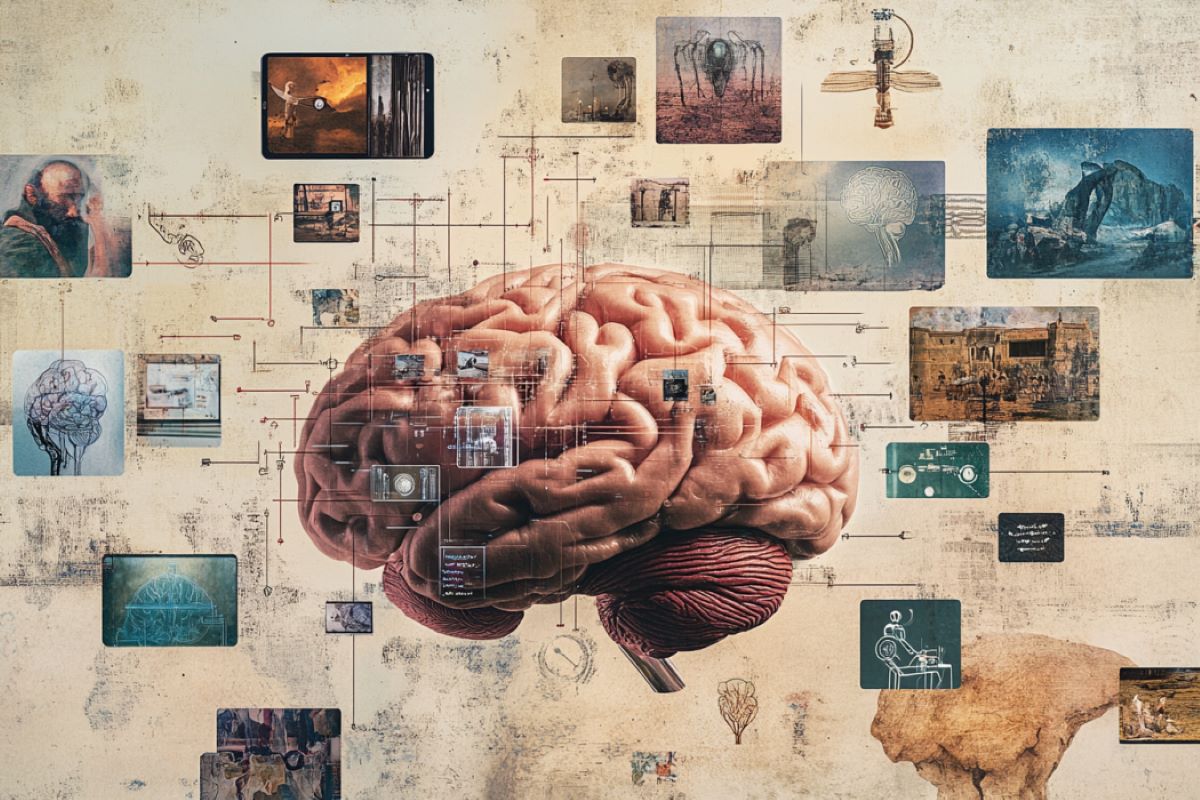Summary: Digital technology has transformed how we document and recall life experiences, from capturing every moment with photos to tracking our health data on smart devices. This increased density of digital records offers potential benefits, like enhancing memory for personal events or supporting those with memory impairments.
However, it also raises concerns, such as privacy risks and the potential for manipulation through technologies like deepfakes. Researchers emphasize the need for further study to understand both the opportunities and risks posed by digital memory aids as they become more integral to how we remember.
Key Facts
- Digital records enhance memory but pose privacy and manipulation risks.
- Technology may aid those with memory impairments by reinforcing recollections.
- Further research is crucial to balance digital memory benefits and risks.
Source: University of Wurzburg
Just a hundred years ago, most people had – at most – a few photos of themselves and their family. What a difference to today, when we can easily capture every important and unimportant moment – from our child’s first step to a visit to a restaurant with friends to a holiday photo on the beach.
And of course, the documentation of our lives doesn’t end there. Just think of the countless emails and WhatsApp messages we write every day, the experiences we share with others via social media or the data we record on our smartwatches.

“One can have very different intuitions about how this increased density of recorded life episodes should be evaluated,” explains Dr Fabian Hutmacher, a researcher at the Chair of Psychology of Communication and New Media at Julius-Maximilians-Universität (JMU) Würzburg in Bavaria, Germany.
“Some people hope, for example, that we will be able to compensate the weaknesses and to reduce the distortions of human memory in this way. Others are concerned that it will rather create new potential for surveillance and undermining our privacy.”
As it is so often the case, things are not simply black and white, but require a closer look, says Hutmacher. Together with JMU Professor Markus Appel and Professor Stephan Schwan from the Leibniz-Institut für Wissensmedien Tübingen, he has published an article on autobiographical remembering in the digital age in the renowned journal Psychological Inquiry.
The article is intended to provide orientation in this still largely unexplored field of inquiry.
Autobiographical Remembering – a Constant Interplay with the Environment
The fact that we draw on resources outside our own minds when remembering past events is not an invention of the digital age, but a constant in human history. Already thousands of years ago, people left behind cave paintings and established traditions for the oral transmission of knowledge.
And if you’re trying to remember your last birthday, for example, you can of course not only use your smartphone, but also look in your paper diary – if you keep one – or ask guests who were at the party.
“What sets digital resources apart from these other options, however, is not only the aforementioned increased density of recorded life episodes, but also the fact that these digital resources create a searchable database consisting of a combination of different media sources that can often be accessed anywhere at any time,” explains Fabian Hutmacher.
“Digital resources do not just provide a passive storage, but also make it possible – using artificial intelligence, for example – to adjust and rearrange recordings in order to create, among others, digital vacation or wedding albums. This can have a profound impact on how we view past experiences,” adds Professor Stephan Schwan, who leads the Realistic Depictions Lab at the Leibniz-Institut für Wissensmedien in Tübingen.
But that’s not all: Different digital resources are suited for different purposes. For example, quantitative data, such as tracking running distances, heart rate, and sleep cycles, seems particularly suitable for discovering long-term behavioural trends.
Other data such as photos and videos, on the other hand, are more likely to be used when it comes to reminiscing or reflecting on past events.
A Look into the Crystal Ball: What Does the Future Hold?
The increased use of digital data for autobiographical remembering could have both desirable and undesirable consequences in numerous fields of application. For example, there are hopes that digital resources could be used to support people with memory difficulties and dementia in their everyday lives.
Similarly, digital recordings could also help to preserve memories that are important to our collective memory, as in the case of witnesses to the Shoah.
“The range of digital ways of remembering is becoming broader, just think of virtual and augmented realities,” adds Stephan Schwan.
At the same time, digital data also offer the possibility of manipulation: Arguably, deepfakes could not only play a role with respect to political actors and events, but also with respect to memories about our own lives.
“In most cases, we don’t have enough reliable data to draw definite conclusions regarding opportunities and risks yet,” summarises Fabian Hutmacher.
“Autobiographical memories are an important part of what makes us human. This makes further research in the coming years all the more important.”
In future studies, Fabian Hutmacher would like to investigate the subtleties of the interplay between recorded data and the memories stored in our minds in even greater detail.
The question of how the recorded data can be used and organised in such a way that it helps people to remember their past is also particularly important to him. The Young Academy of the Bavarian Academy of Sciences and Humanities, to which Fabian Hutmacher was admitted at the beginning of 2024, is funding his research.
About this memory and neuroscience research news
Author: Esther Knemeyer Pereira
Source: University of Wurzburg
Contact: Esther Knemeyer Pereira – University of Wurzburg
Image: The image is credited to Neuroscience News
Original Research: Open access.
“Understanding autobiographical memory in the digital age: The AMEDIA-model” by Fabian Hutmacher et al. Psychological Inquiry
Abstract
Understanding autobiographical memory in the digital age: The AMEDIA-model
Recent technological developments have led to an increased density of recorded life episodes.
To understand how creating and sharing such immense amounts of data shapes the way individuals remember their past, we propose a model for autobiographical memory in the digital age (AMEDIA-Model) that systematizes the existing literature and sketches avenues for future research.
The model views autobiographical remembering in the digital age as the result of the iterative process of combining information stored in the mind and information stored in the environment using high-tech applications.
Moreover, the way autobiographical memories are (re-)constructed crucially depends on the way the information has been encoded and curated: Autobiographical remembering in the digital age is not a uniform process but is fundamentally shaped by the technology and the data that is being used.
The AMEDIA-Model offers a framework for understanding technology-mediated human cognition in the twenty-first century.






